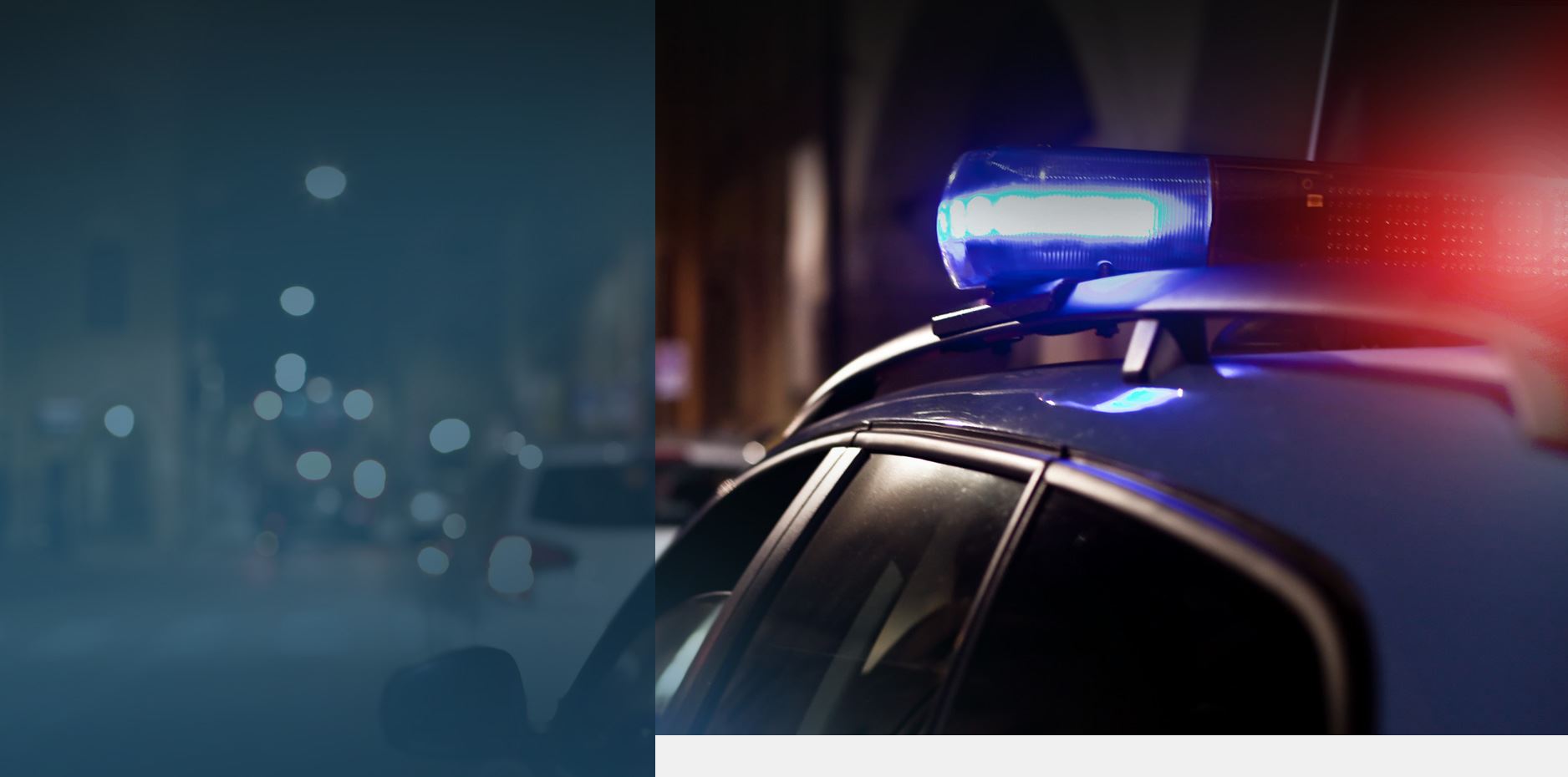
Police Misconduct Attorney
Protecting Your Rights Against Unlawful Actions
The law firm of Wisner Baum represents individuals and communities that have been subjected to police brutality and misconduct in Los Angeles and throughout the state of California. Our work for and with people who have experienced excessive force and other abuses of power by law enforcement began in the 1990s. Today, we continue to vigorously advocate on behalf of individuals protesting racial injustice and other clients who have suffered severe injuries or death due to police misconduct.
Our firm is deeply committed to vindicating the rights of survivors of police brutality and those who have had their lives wrongfully taken by law enforcement, securing the justice and compensation they deserve, holding law enforcement officers and municipalities accountable when they cause devastating harm, and ensuring our work contributes to the eradication of systemic racism and militarized policing.
Police Misconduct Attorneys
Call Wisner Baum today at (855) 948-5098 or contact us online to schedule a meeting with our police misconduct attorney!
What is Police Misconduct?
Police misconduct involves a law enforcement officer (or officers) engaging in violent or other illegal behavior under the “color of law, " resulting in one or more civil rights violations. Our firm prosecutes cases against those police officers, sheriffs, and other law enforcement officials who have violated an individual’s rights to be free from excessive force and unlawful seizures, to receive due process under the law, and to exercise their First Amendment rights freely.
Standing Up Against Police Misconduct and Advocating for Justice
Police brutality is a civil rights violation in which law enforcement officers use undue or excessive force against an individual. Depending on the circumstances, an officer of the law may use reasonable physical force to diffuse an incident or apprehend an individual. Still, that physical force must cease once the need for force no longer exists.
.2011061153550.jpg)
Unfortunately, this is not always how things go, especially in low-income neighborhoods and within communities of color. Often, instances of police misconduct arise where law enforcement officials are called to respond to issues for which they are not qualified, such as mental health crises and domestic disputes, and to address issues with individuals experiencing homelessness.
Our attorneys believe it is crucial to expose and bring awareness to excessive and sometimes cruel and undue force perpetuated by some within law enforcement, resulting in serious injury, long-term suffering, and, unfortunately, in too many cases, death.
Wisner Baum stands in solidarity with protesters peacefully exercising their constitutional rights. We are committed to holding accountable law enforcement agencies and officers who have engaged in police brutality against members of the communities they swore to serve and protect. We support a call-to-action to end systemic racism and militarized policing.
Statistics on Police Violence
The following statistics were compiled from Campaign Zero’s Police Scorecard. The “deadly force” statistics include firearms discharges and all incidents in which the use of force resulted in death or severe injury to a civilian.
The “less-lethal force” statistics include the use of police batons, impact projectiles, tasers, pepper spray, chemical munitions, improvised object strikes, strikes with a flashlight, carotid restraints (compressing sides of the neck to restrict blood flow to the brain, also referred to as chokeholds) and lateral vascular neck restraints (neck restraints standing or kneeling).
Los Angeles Police Department (LAPD)
According to Campaign Zero, between 2016 and 2018, LAPD used so-called “less-lethal force” 47% more per arrest than other police departments in California and used deadly force 72% more per arrest than other departments in the state.
During the same period, LAPD received more than 2,300 “use of force” complaints from civilians. Only 1% of those cases did LAPD rule favor civilians.
San Francisco Police Department (SFPD)
According to Campaign Zero, between 2016 and 2018, SFPD used “less-lethal force” 73% more per arrest than other police departments in California and deadly force 57% more per arrest than other departments in the state. During the same time period, SFPD received 322 “use of force” complaints from civilians. In only 2% of those cases, SFP D ruled in favor of civilians.
San Diego Police Department (SDPD)
According to Campaign Zero, between 2016 and 2018, SDPD used so-called “less-lethal force” 93% more per arrest than other police departments in California and deadly force 41% more per arrest than other departments in the state. During the same time period, SDPD received more than 1,500 “use of force” complaints from civilians. On average, SDPD ruled in favor of civilians in only 2% of those cases.
Like many other police departments in major cities throughout the country, it is difficult for civilians to hold LAPD, SFPD, and SDPD police officers accountable because they can disqualify complaints and give officers unfair access to information when complaints are filed.
Filing a civil action is one of the only ways to hold the department accountable; it is no small task, considering that police departments are protected by qualified immunity.
According to Campaign Zero, between 2016 and 2018, SFPD used “less-lethal force” 73% more per arrest than other police departments in California and deadly force 57% more per arrest than other departments in the state. During the same time period, SFPD received 322 “use of force” complaints from civilians. In only 2% of those cases, SFPD ruled in favor of civilians.
San Diego Police Department (SDPD)
According to Campaign Zero, between 2016 and 2018, SDPD used so-called “less-lethal force” 93% more per arrest than other police departments in California and deadly force 41% more per arrest than other departments in the state. During the same time period, SDPD received more than 1,500 “use of force” complaints from civilians. On average, SDPD ruled in favor of civilians in only 2% of those cases.
Like many other police departments in major cities throughout the country, it is difficult for civilians to hold LAPD, SFPD, and SDPD police officers accountable because they can disqualify complaints and give officers unfair access to information when complaints are filed.
Filing a civil action is one of the only ways to hold the department accountable; it is no small task, considering that police departments are protected by qualified immunity.
According to Mapping Police Violence, 1,098 people were killed by police in 2019. Black people accounted for 24% of the total despite comprising only 13% of the population.
Some argue that the militarization of policing is one reason the use of deadly force continues to be a problem. In 1996, the U.S. passed a law that allowed the Department of Defense to provide surplus “military grade” equipment to police and sheriff’s departments. Since that law was passed, police and sheriff’s departments throughout the country have received military weapons and equipment worth billions, and that does not take into account the money spent from expansive police budgets throughout the country.
Police training has also embraced a militarized combat mentality, favoring an “us vs. them” perception in which cops are taught to apply a “warrior” philosophy. Dave Grossman, who gives hundreds of police training courses throughout the nation every year before thousands of police officers, coined the term “killology” and preaches “warrior policing” during his courses. Grossman’s goal is to train police officers to think and act like military soldiers prepared to kill at a moment’s notice and to regard their community as territory occupied by insurgents.
Militarized policing – in which force is more often used as the first resort – disproportionately impacts Black communities. Jeronimo Janez, the police officer who shot and killed Philando Castile in 2019, attended a training session that Grossman co-taught.
A 2019 study conducted by the Proceedings of the National Academy of Sciences (PNAS) found that police violence is a leading cause of death for young Black men in the United States. About one in every 1,000 Black men “can expect to be killed by the police,” the study says.
Carl Takei, a senior staff attorney at the American Civil Liberties Union (ACLU), notes that police violence is a leading cause of death for people of color because “over-policing of Black and Brown communities results in unnecessary police contacts and unnecessary use of force.”
Police Violence Can Involve the Use of ‘Non-Lethal’ or ‘Less-Lethal’ Weapons
Contrary to what the phrase implies, the use of “non-lethal” or “less-lethal” weapons can cause severe injuries and death. Police brutality and excessive force cases often involve the following:
- Police Batons: Swinging a baton can cause broken bones, broken teeth, fractured skulls, traumatic brain injuries, spinal cord injuries, and a host of other severe injuries.
- Tasers: The powerful electrical charge in police-issued tasers has the potential to kill. According to a study conducted by Reuters, the number of deaths stemming from law enforcement use of Tasers disproportionately affects people of color. The study also notes that law enforcement officials often misuse Tasers and lack safety training.
- Pepper Spray or Pepper Balls: Also known as “OC” spray (from the chemical name, oleoresin capsicum), pepper spray has been used as a crowd control measure during peaceful protests or in situations where individuals allegedly resist arrest. While most injuries involving pepper spray are minor respiratory and skin issues, some people have suffered severe allergic reactions. A protestor in Omaha, Nebraska, suffered permanent eye damage after being shot with a pepper ball projectile.
- Tear Gas: Law enforcement officials use tear gas in crowd control situations like pepper spray. Inhaled tear gas can cause severe respiratory damage, especially for those with preexisting conditions. Heart rate and blood pressure can increase with exposure to tear gas, causing some people to experience heart attacks.
- Rubber Bullets: Police officers use rubber bullets during protests and other crowd control situations. Rubber bullets or other similar projectiles like bean bags are capable of breaking bones, causing skull fractures and other traumatic brain injuries, damaging internal organs, and inflicting painful eye injuries.
- Handcuffs: While handcuffs are not thought of as a weapon, many survivors of police violence have suffered severe injuries after being handcuffed and thrown to the ground or into a wall for allegedly resisting arrest. Some peaceful protestors have also been seriously injured when police officers cut off zip tie restraints with scissors and repeatedly cut the individual’s wrists and hands.
- Chokeholds: In the wake of chokeholds being used by law enforcement, a too frequent effect of which is to kill individuals such as Eric Garner, George Floyd, and others, more and more police departments are banning the use of chokeholds. While banning this dangerous hold is a welcome step, it does not address the heart of the issue – which is militarized policing and systemic racism. Until the root of that evil is pulled out, police chokeholds will likely continue causing more severe injuries and death, especially among people of color. According to a Los Angeles Times analysis of California Department of Justice data, between 2016 and 2018, law enforcement officers in the state seriously injured 103 people while using carotid neck restraints (chokeholds). Black and Latino people accounted for more than 60% of these incidents.
Contact Our Police Misconduct Lawyer Today
If you or a loved one has been subjected to police brutality or misconduct, we are here to help you. It is our public duty to fight for justice on behalf of– and with – those affected by ongoing police aggression, to ensure that our clients are rightfully compensated, and, importantly, to contribute to the fight to end police violence and its underlying causes.
Contact Wisner Baum today to schedule a meeting with our police misconduct lawyer!
Our Case Results

-
$10 Million Settlement A Major Foreign Plane Crash
Wisner Baum obtained a $10 million settlement for the death of a passenger in a major foreign plane crash.
-
$14 Million Settlement A Major US Plane Crash
Wisner Baum obtained a $14 million settlement for the death of a passenger in a major US plane crash.
-
$17.5 Million Settlement A Major US Plane Crash
Wisner Baum obtained a $17.5 million settlement on behalf of a client who was killed in a major U.S. plane crash.
-
$10 Million Settlement Celexa-Lexapro Pediatric Class Action
$10 million pediatric class action re false promotion of Celexa and Lexapro. Babies born to women who have used Lexapro and other similar medications such as Zoloft, Celexa, Prozac, Paxil, and Symbyax are at an increased risk for birth defects.
-
$8.5 Million Verdict Commercial Truck Accident
Wisner Baum secured a $8.5 million wrongful death verdict against the food industry company, Tyson Foods, for the wrongful death of a young man.
-
$28 Million Settlement Defective Drug Class Action
$28 million Paxil defective drug class action. A class action has been brought in the US territory of Puerto Rico against UK-based drug major GlaxoSmithKline.

Client-Focused Representation
REVIEWS & TESTIMONIALS
We believe our track record speaks for itself. But you don’t have to take our word for it. See what our clients have to say about working with us.
-
"I Can’t Imagine a Better Law Firm"
Multiple lawyers recommended Wisner Baum to me and I have been consistently impressed with the quality of their work.
- Best Law Firms Survey -
"They Are About Changing the Systems..."
Wisner Baum are not only amazing attorneys but more importantly, they are activists. They are about changing the systems which got us into trouble in the first place. They understand their role in the process of making change.
- Kim Witczak -
"Top Legal Minds in the Country"
The Wisner Baum firm has some of the top legal minds in the country; they are driven, determined, trustworthy, ethical and passionate.
- From Best Lawyers® Best Law Firms




.2202231143550.png)
